You can contact LEARNZ, part of CORE Education, at:
Postal Address:
PO Box 13 678,
Christchurch 8141,
New Zealand
Water depth: 5526m
Sea temperature: 17.8°C
Hi Everyone,
It was another balmy day out in the middle of the ocean today and you didn’t have to report to duty until 0930. Up on the Bridge you spoke to Waikari School during the audioconference and you can listen to the recording to hear the answers to their tricky questions.
Winter on the high seas
It doesn’t seem like winter except for the short daylight hours, it gets dark at about 5pm. Really we should be in a different time zone as we have crossed over the longitude of 180° west but for convenience this area, including the Chatham Islands and Kermadec Islands, have the same time as the rest of New Zealand. Tomorrow is the winter solstice so it will be the shortest day and longest night of the year. Luckily there are strong lights on board and no-one minds working through the night.
A global Argo network
The Argo Float programme has been running since the year 2000 and there are about 3,000 floats operating throughout the world. Since the early Argo Float days the design and accuracy has improved greatly. Now Argo Floats don’t just send data they can also receive it. This means the floats can be reprogrammed while out at sea if they move around too much. Sometimes Argo Floats get washed up on shore. This is rare because usually the floats stop working and sink to the bottom of the ocean. If a float does get washed up and is still working it will transmit its position using GPS technology.
Tracking Argoes
Esmee told us a funny story about a float washing up in Australia and being picked up by someone who threw it in the back of their truck. The float was tracked by GPS on a road trip around Australia and eventually picked up by CSIRO. Scientists found the float just in time as the person who had it was about to chop the float in half to make a letter box. The floats contain lithium batteries which can be explosive so it was just as well that the float was rescued.
Going deeper
Ever since the Argo programme began scientists have wanted to gather data from deeper and deeper water. Regular Argo floats can only go to a depth of about 2000m, so Deep Argo floats are being developed. Norge from Seabird Scientific talked to you about how this new technology has evolved. You can watch the video to find out about the process of developing Deep Argoes. Yesterday you were lucky enough to see one of the first Deep Argoes being deployed. These are prototypes and need to be tested to see if they work properly. Norge explained that it has already taken several years to develop these floats and it will probably take about ten years before the Deep Argoes are fully perfected and being used worldwide.
Deep Argo number two
Nathalie is in charge of the Deep Argoes being tested on this trip and after deploying one successfully yesterday was keen to get the other one in the water so comparisons could be made. The second Deep Argo wasn’t always sending signals as it was supposed to. These floats communicate via satellites and if this doesn’t work properly then they are pretty much useless so Nathalie delayed the deployment. Luckily the Argo passed all the tests and talked to the satellites correctly so it was finally launched.
All eyes on deck
Just to make sure that the Deep Argo was working you had to keep an eye on it to make sure it completed its first test dive to 150m. The Captain had to carefully manoeuvre the boat so that he could stay close to the float without running over it. If the float didn’t work it would have to be rescued. Fortunately everything worked and you saw the float dive beneath the surface. About an hour and a half later it popped back up and sent its data just as a good little Argo should. Watch the video to find out more.
There is no such thing as a weekend on board the RV Tangaroa, everyone will keep up their shift work and the scientists will make the most of their last two days out on the deep ocean. We’ll give you a break though and send you an update on Monday.
Shelley
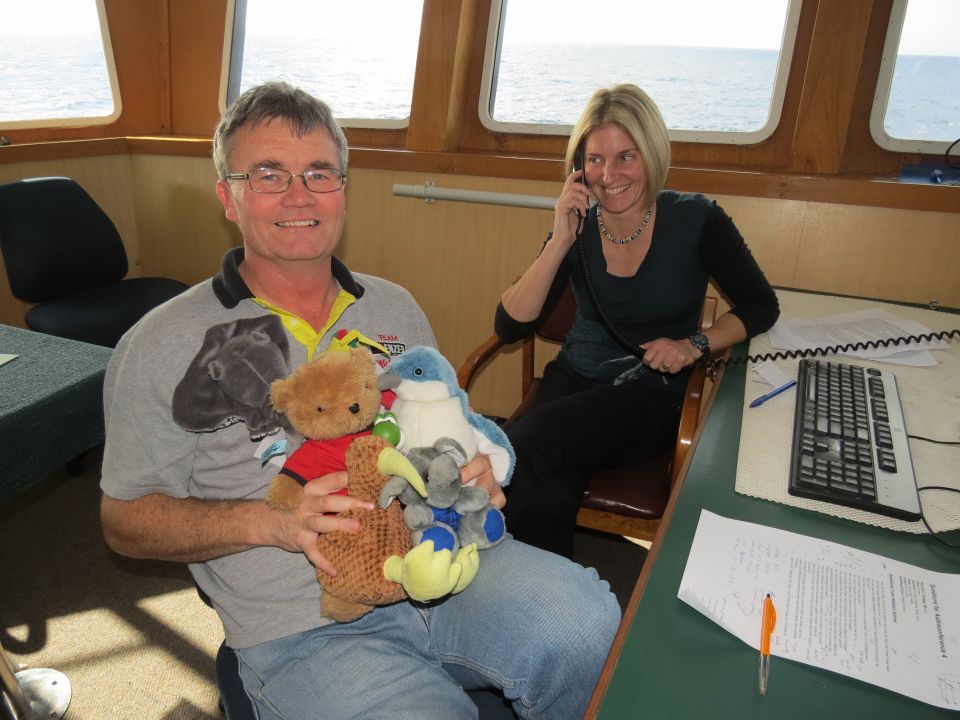
Shelley and Phil talk to Waikari School during the daily audioconference.
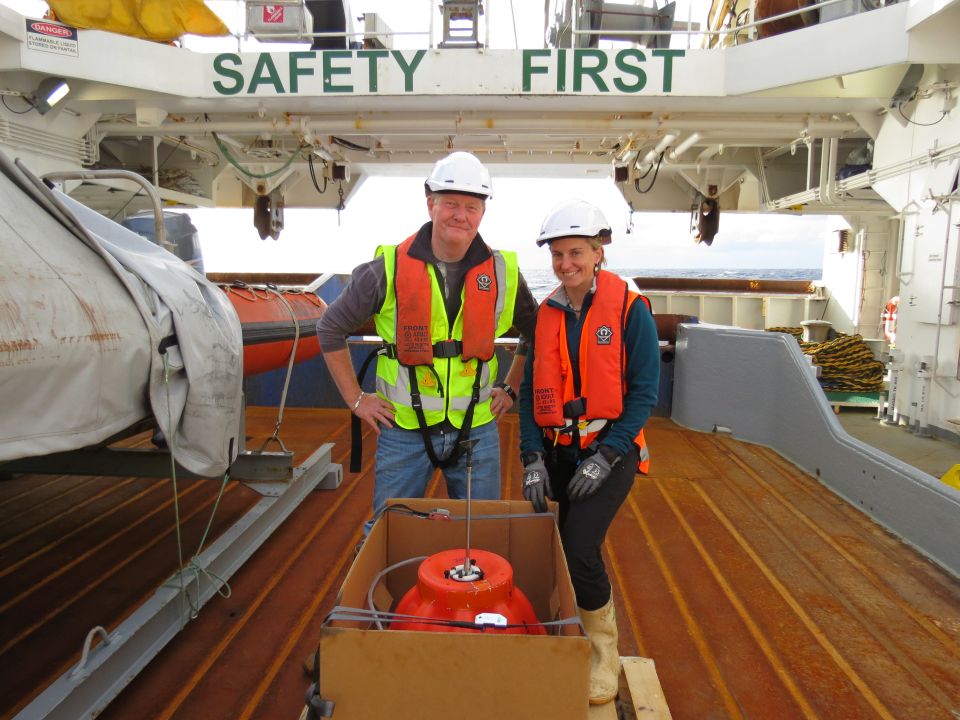
Norge Larson shows Shelley some of the design features of one type of Deep Argo Float. Why do scientists want floats that can take measurements in very deep water?
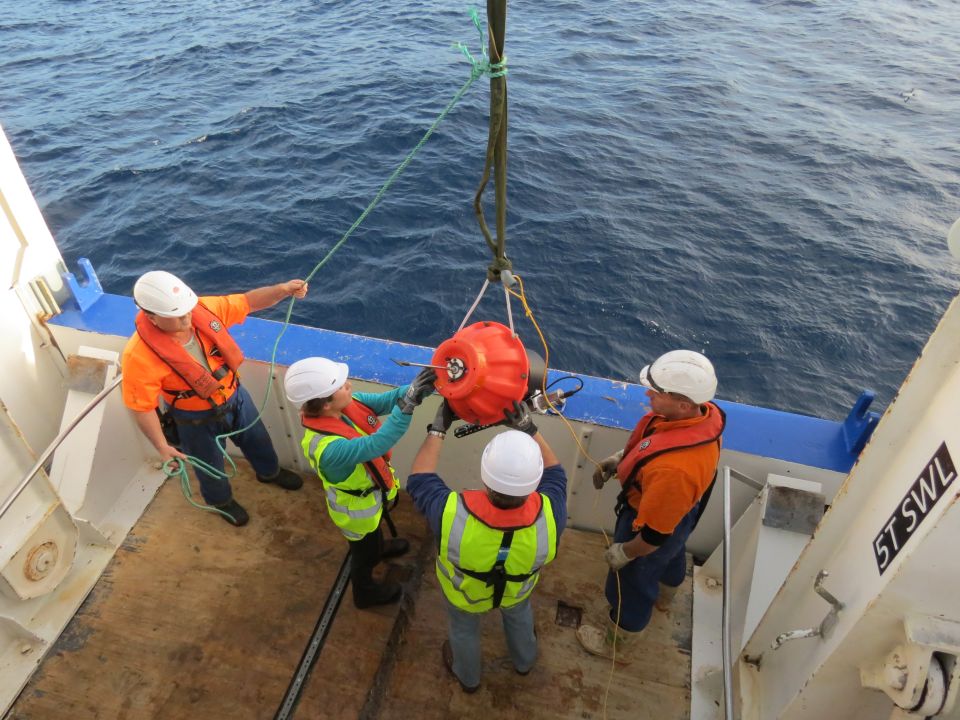
The second Deep Argo is carefully held by scientists and crew members as it is winched up ready to be deployed. Why do the Argoes have to be handled carefully?
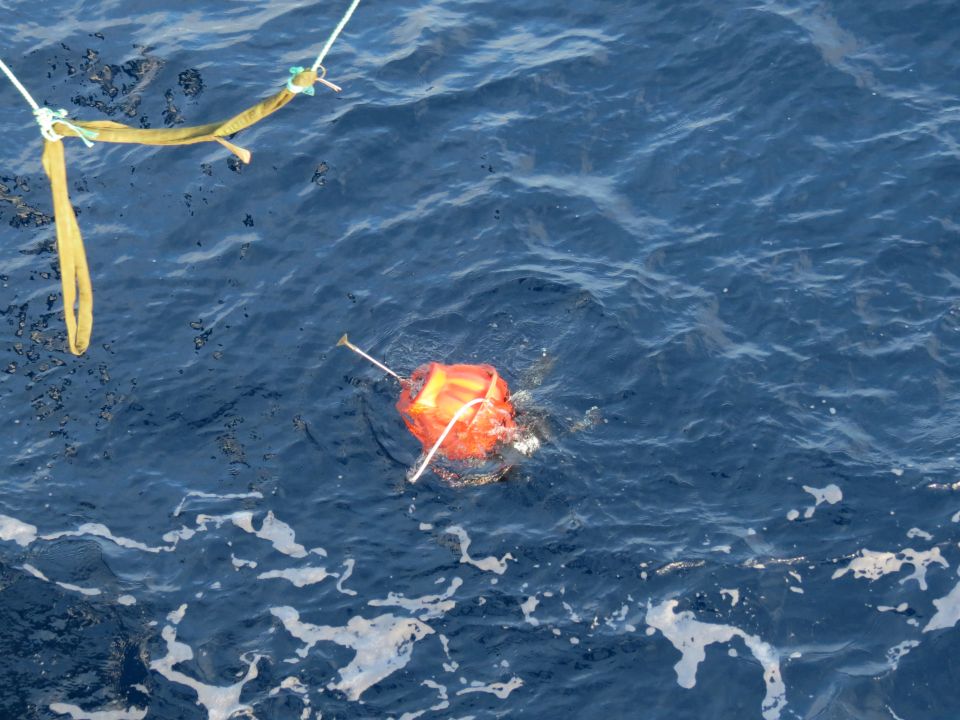
The second Deep Argo is successfully deployed. What do you think will happen to it now?
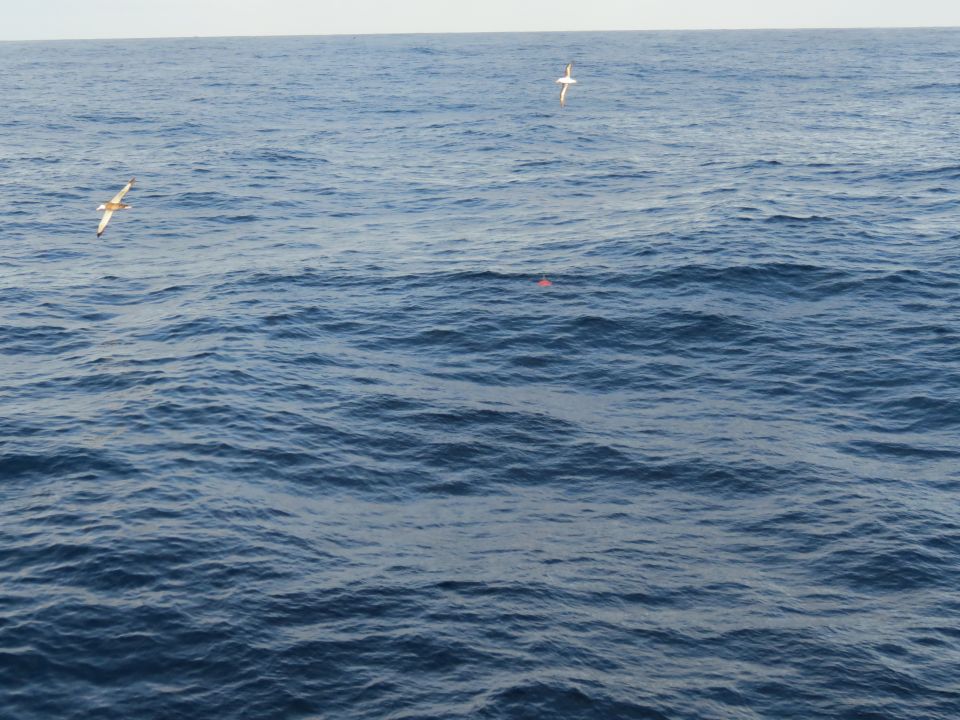
Young Wandering Albatross come to check out the Argo. Sometimes birds land on the floats, why do you think this happens?
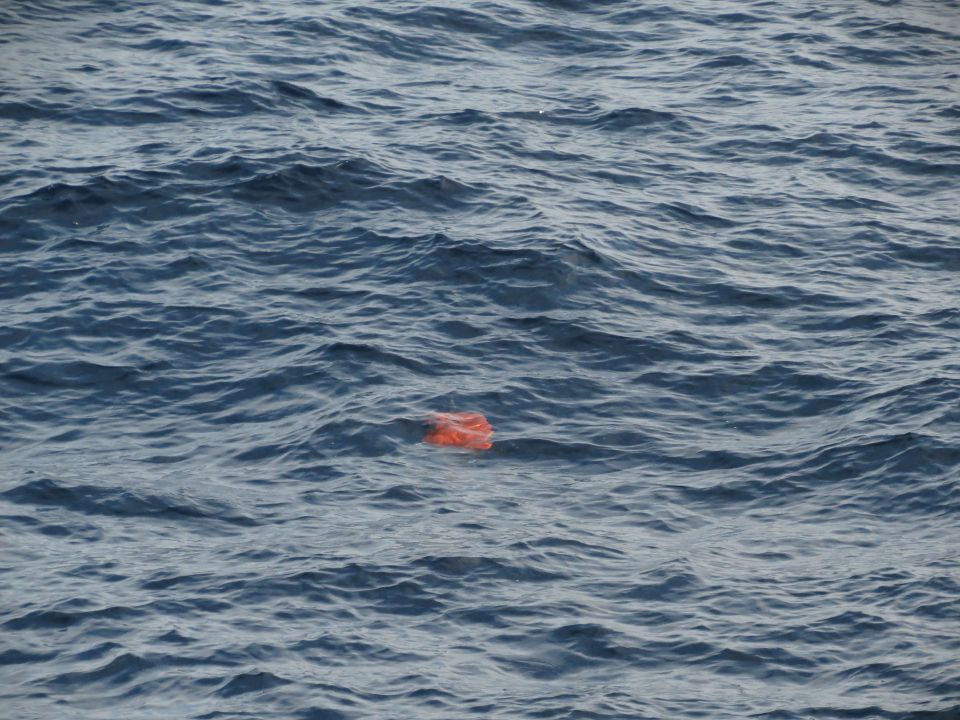
The Deep Argo begins its first test dive. What depth will it dive to and how will we know if it works?
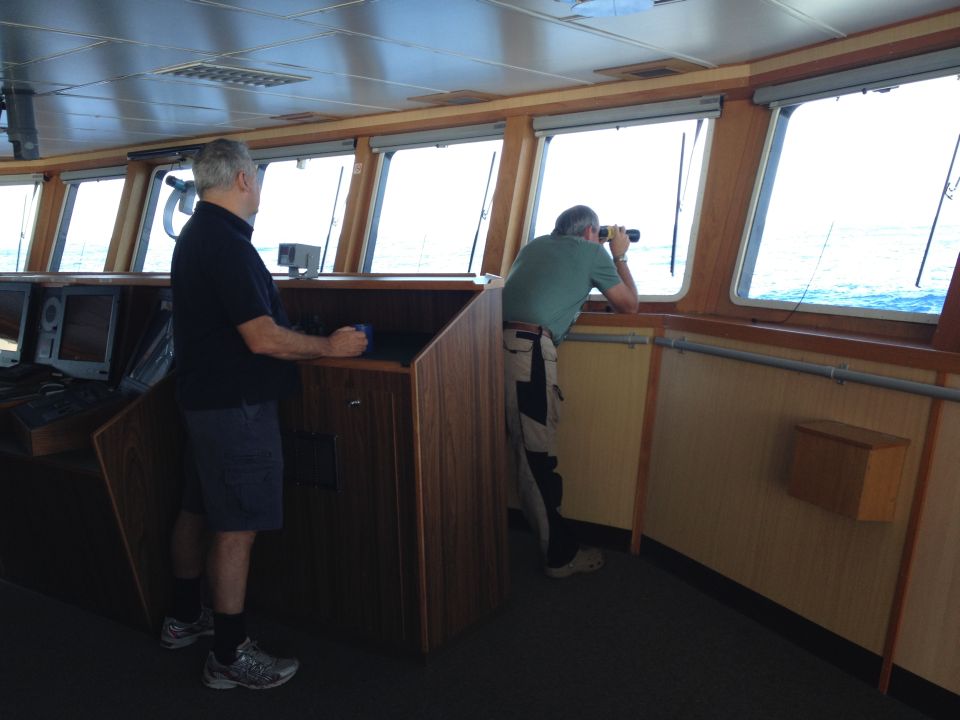
Everyone keeps a look out for the Deep Argo to make sure it is still working. How are Argos usually found and tracked?
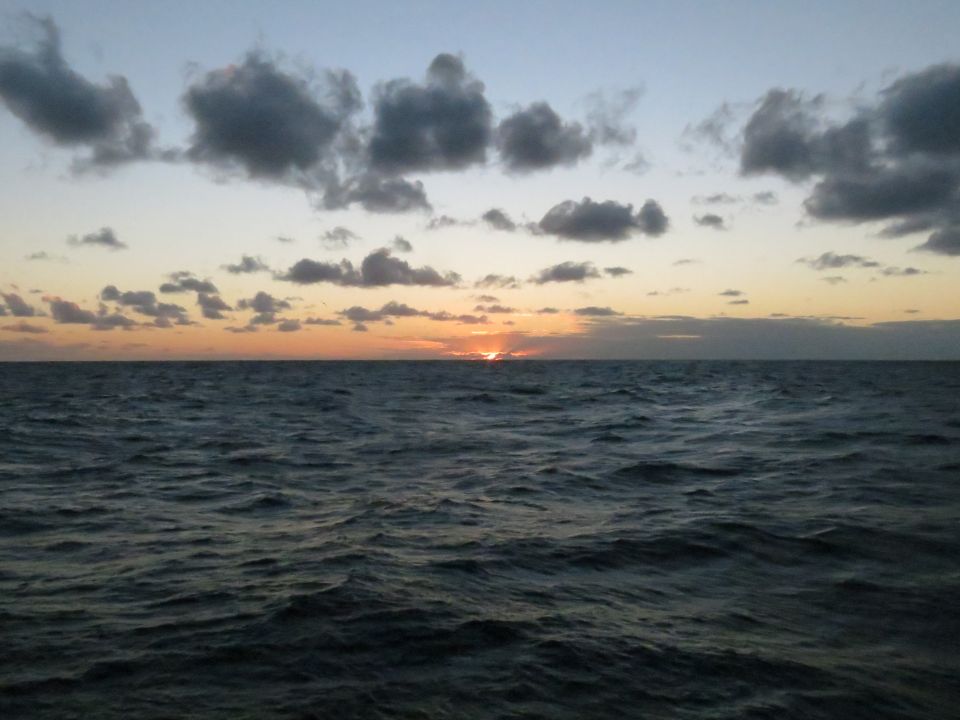
The sun sets on another successful day on board the Tangaroa.